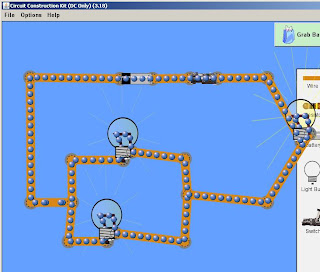An electric circuit is a pathway for energy transfer. When connected in a closed path, the electric current can travel from a source to an object. However, the circuit MUST have a source, such as batteries. Since the circuit is a closed path, the wiring must connect to both terminals of the source. Electric circuits consist of resistors, batteries, and wires. Ways of measurements include ammeters and voltmeters. An ammeter measures current and a voltmeter measures the voltage across an element of a circuit. There are two types of circuits: series and parellel. However, you can also combine circuits.
In a series circuit, the current is the same at all points, but the equivalent resistance is equal to the sum of each single resistor and the voltage drop sum is equal to the voltage drop across the whole circuit.
In a parellel circuit, the voltage sum is equal to the voltage drop on each branch and the total current is the sum of each resistors' current. Also, the equivalent resistance is decreased each time a new resistor is added to the circuit.
This circuit consists of a series and two parellel. The two parallel resistors are connected in series with the single series resistor on the right. To find the total current, you can combine the parellel circuit's resistance and the series resistances.


